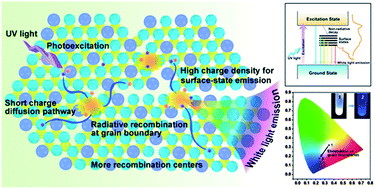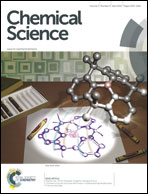Grain boundary engineering in atomically-thin nanosheets achieving bright white light emission†
Abstract
Developing single-phased white light-emitting materials with high brightness, good transferability and energy-saving economy has attracted tremendous attention during the past decades owing to their facile light manipulation and easy device fabrication. Herein, we highlight the first transferable two-dimensional (2D) white light-emitter by engineering grain boundaries in atomically-thin semiconducting nanosheets. With the merits of the abundant grain boundaries, effective surface states that can trap the photogenerated charges can be enriched, giving significant enhancement of the surface-state emission. Besides, the existence of grain boundaries can shorten the diffusion length of the charge carriers from the photogeneration zone to the recombination center, giving a higher charge concentration for radiative recombination and further enhancing the intensity of the surface-state emission. In addition, the bandgap-tunable nature of the atomically-thin nanosheets endows the tunable band-edge emission, providing the opportunity to realize white light emission synergistically. The novel white light-emitter exhibits high brightness and superior photostability, which are crucial to solid-state lighting. This work paves a new way for achieving white light emission from single-phased photoluminescent materials and will broaden the vision on developing advanced white light-emitters with high brightness and transferability.


 Please wait while we load your content...
Please wait while we load your content...